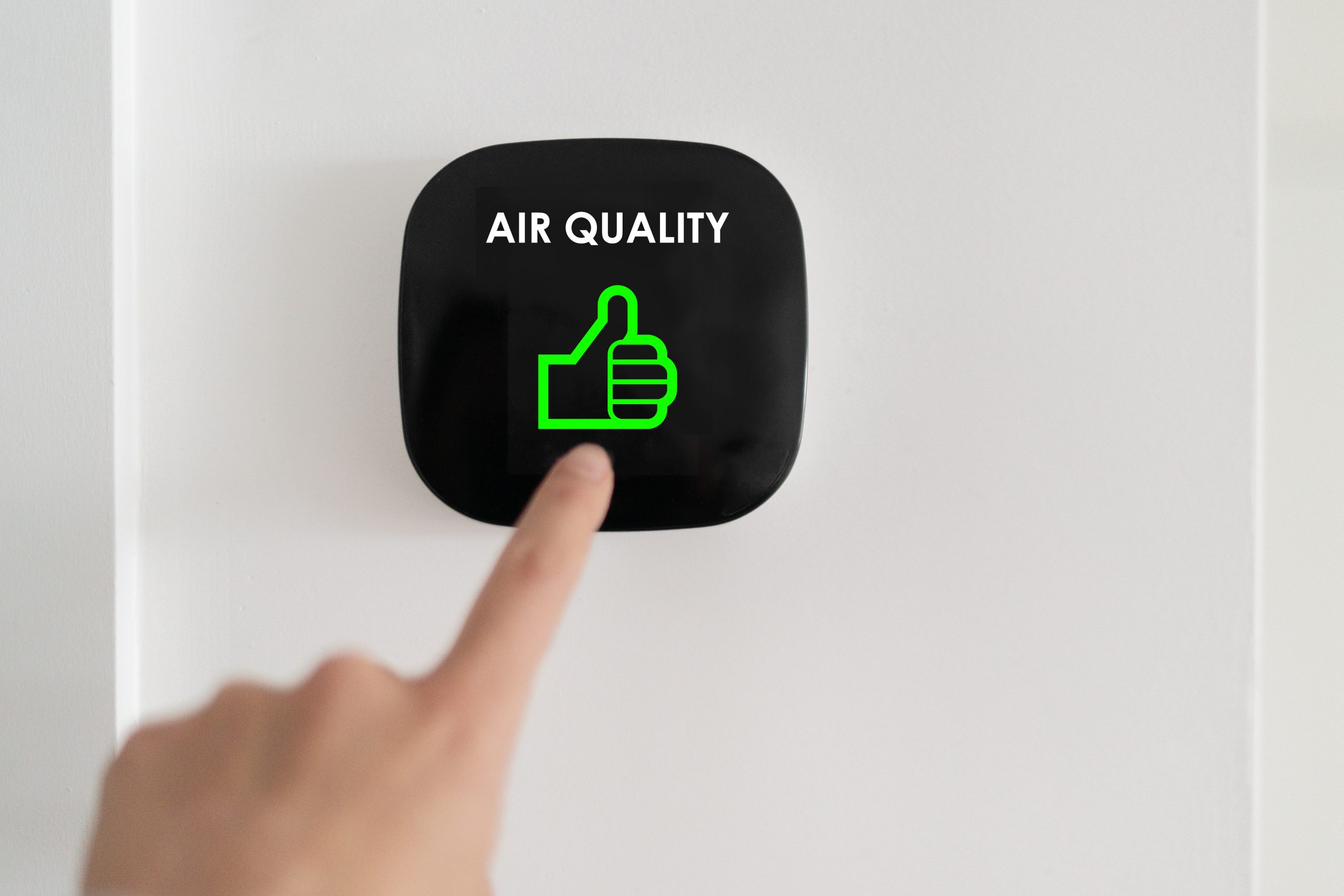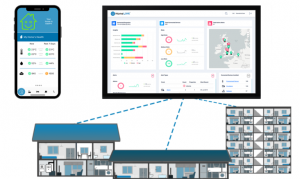How do These New Sensors Improve Indoor Air Quality?

Indoor air quality is a largely misunderstood issue in the UK, with it usually being 2-5 times worse than outdoors. Housing Industry Leaders speaks to Aico to discuss how ways in which the indoor air quality of social homes can be improved.
The social housing sector counts for around 5 million homes in the UK. This is about 20% of housing in the UK. Aico is the largest provider of smoke alarms, with 95% of those homes equipped with their product.
Implementation of IoT allows for these smoke alarms and environmental sensors to be managed remotely, which highlights to the landlord of social homes any issues that may need fixing or replacing. Since Aico acquired HomeLINK they have focussed on more sensor categories that identify and solve other issues.

CEO of HomeLINK, Chris Jones
Residents use a mobile app to track their humidity and carbon dioxide levels, amongst other things. It is hoped that these new sensors will help landlords save money and improve compliance whilst reducing the cost to the NHS in indoor air quality-related ailments, in turn, improving the lives of residents in social housing.
To do this Aico use IoT and information gateways to connect smoke alarm data and environmental data into one place. This information is then relayed to landlords and residents respectively.
Housing Industry Leaders heard from the CEO of HomeLINK, Chris Jones: “A lot of social housing residents struggle to access the internet, so Aico has developed an IoT internet gateway that uses the mobile phone data network meaning we don’t need to rely on a strong internet connection from the resident for the product to work.”
From net-zero to fuel poverty, new sensors have a huge depth
Aico and HomeLINK sensor technologies aim to provide a return of investment for landlords who will ultimately improve the quality of their homes, keep costs low with preventative maintenance, and ensure they are compliant with Fitness for Human Habitation legislation (Homes Act 2018). Additionally, they aim to improve the health and well-being of residents by monitoring carbon dioxide levels, dampness, mould and humidity levels.
We are an organisation with a social mission. There are so many areas we touch on, from helping with net-zero strategies through to identifying fuel poverty and improving the health and well-being of residents
Remarkably, per household, the NHS spends £500 over ten years treating patients with an illness that has been caused by poor indoor air quality.
One of the reasons indoor air quality have reduced over recent years is due to the fact houses are increasingly becoming more energy efficient. Once insulation and double glazing are installed into houses, the house becomes more airtight. This often leads to problems such as damp and mould which damages the health of the resident.

To tackle this, Chris told Housing Industry Leaders: “One of the best things about investing in solutions with the sensors, is you can see any accidental negative impacts of improving energy efficiency. Billions are about to be spent getting UK homes to a net-zero standard, without data monitoring and evaluation we are doing it blindly and that could be a lot more costly in the long run.”
“The other side is scaling a solution for people with existing damp and mould issues. They will be sent a kit with the sensors in, and they will be installed. The resident can have an app with guidance, advice and insights around how they can make their homes more efficient and healthy. It doesn’t just highlight issues but offers actual solutions.”
Aico and HomeLINK have a rich history with environmental sensors
One flagship project is with Poplar HARCA in London, where Aico uses a lot of IoT integration. They learned from this when developing their new environmental sensors.
Chris said: “Some tower blocks are listed as historic buildings. So, the challenge they have is to get these listed buildings as energy-efficient as possible. What we are doing is placing sensors throughout the building so we can understand exactly what the challenges are to make it more energy-efficient.”
Moderately poor indoor air quality can reduce cognitive functioning by 50%, according to a Harvard study that monitored the effects of varying CO2 levels in the workplace, testing their cognitive abilities throughout.
This study showed that the slightly elevated level of 1,400ppm of CO2 (~500ppm is the baseline) had this dramatic effect. These levels of CO2 are commonplace in the indoor environment particularly in meeting rooms, classrooms and bedrooms. You may find sleeping with the window or bedroom door open vastly improves how you feel in the morning.
Moderately poor indoor air quality can reduce cognitive functioning by 50%
In school classrooms, this disrupts the learning of children across the country. Aico recently launched a project in Cardiff, deploying 60 classrooms worth of sensors across 4 schools to monitor indoor air quality.
Rounding up the interview, Chris told Housing Industry Leaders: “The next 5 years are going to be really busy for us. In our sector, there are currently two hot topics. Firstly, there is already legislation that aims to ensure residents live in safe and healthy homes and recent investigations by ITV are already showing that this may not always be the case.
We need to get our homes to net-zero standards ASAP to combat climate change. This is a phenomenally difficult and expensive thing to do and many of the current standards and guidelines are recommending post-occupancy performance and evaluation (e.g. PAS2035 and BS40102).
“We believe our IoT sensors are essential in tackling both topics. Beyond this, we are seeing increasing demand from other sectors such as schools and hospitals.”

